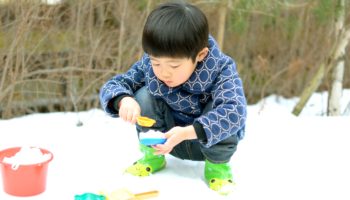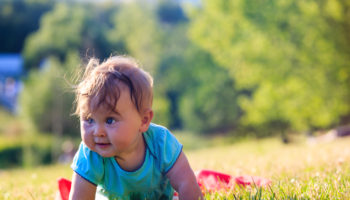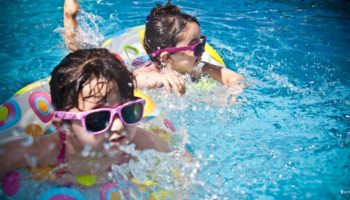Leah Zabari
Mud pies, hide and seek, climbing trees, grass stains, and ripped jeans. Oh! The fun childhood memories when freedom to explore the world through adventures and imagination went on from sun up to sundown. But sadly, with computer, TV and the push for more developmentally inappropriate academics in early childhood, these adventures seem more like made up fairy tales than memories of reality. However, there is a growing number of educators, pediatricians and parents that are realizing the importance of play-specifically outdoor play in relation to child development and learning.
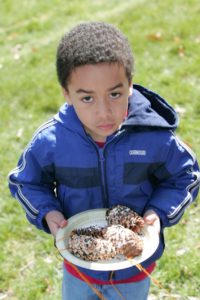
Outdoor play is one of the fundamental aspects that characterizes childhood. Children need exposure to the natural world through exploration, experimentation, motivation and manipulation of their senses. Providing a wide variety of opportunities to explore the natural world not only gives children the freedom to use their creativity and imagination, but also provides learning opportunities that otherwise, could not take place within the indoor classroom. Yes, children can learn a plethora of information in the classroom, but taking learning outside has a far better impact on children because it can be tied to their physical experiences. When children experience learning hands-on, it is likely they will remember what they learned. For instance, reading a book about butterflies is definitely informative, but taking their knowledge and incorporating it into gross motor play outside where the children can run around searching, chasing, and catching butterflies (making a graph about it later) is much more of a concrete and meaningful experience; one definitely worth remembering.
Outdoor play also offers children the capability of re-charging their brains. Research shows that, “Brain Breaks are a quick and effective way of changing or focusing the physical and mental state of the learners in your group. They are also a useful tool for students to use to help activate, energize, and stimulate their brains. Research indicates that brain breaks also improve students’ concentration and relieve stress. The most effective brain breaks incorporate some level of physical movement in order to stimulate neurological pathways and help both hemispheres of the brain work together.” (Pottsgrove School District)
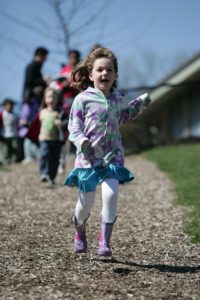
Providing outdoor play to children is essential for cognitive health as well as physical health. Physical activity encourages the stimulation of small and large muscles through use of portable (balls, tricycles, scooters, hula hoops, jump ropes, etc.) and stationary (climbing/sliding structures) equipment. Providing equipment provides children opportunities to learn new skills and build on skills they have already mastered. Outdoor play also enables children to experience peer interaction and social emotional skills as they learn to participate in various group activities such as soccer, baseball, football, etc. and even simple rule following games such as “Follow the Leader” and “Simon Says.” Children need the chance to run, jump, swing, skip, and ride a bike. The more exposure children have to these types of activities, the more likely they will continue being active as they grow older. This is especially important when we look at the research for obesity in America.
The most important aspect of outdoor play is the “let the children be children” rule. Children thrive in an environment where they can be who they are and explore their world through imagination and creativity. That doesn’t mean that they should be left alone outside all the time to be “free as birds,” but allow them the freedom to make up their own mind in how they are going to play outside. It is also more than okay to guide, provide materials, and participate with children in play as you give them opportunities to enhance their own learning. So go ahead! Provide pie plates for mud pies and shovels to dig for bugs. Guide them in an obstacle course made of sticks and a race to build the biggest leaf pile. Grass stains can be washed, but memories and experiences gained from outdoor play will last a lifetime.
Articles worth checking out:
Videos and articles by Kenneth Ginsburg, MD. FAAP
Caring for Our Children – standards and practices
American Academy of Pediatrics
